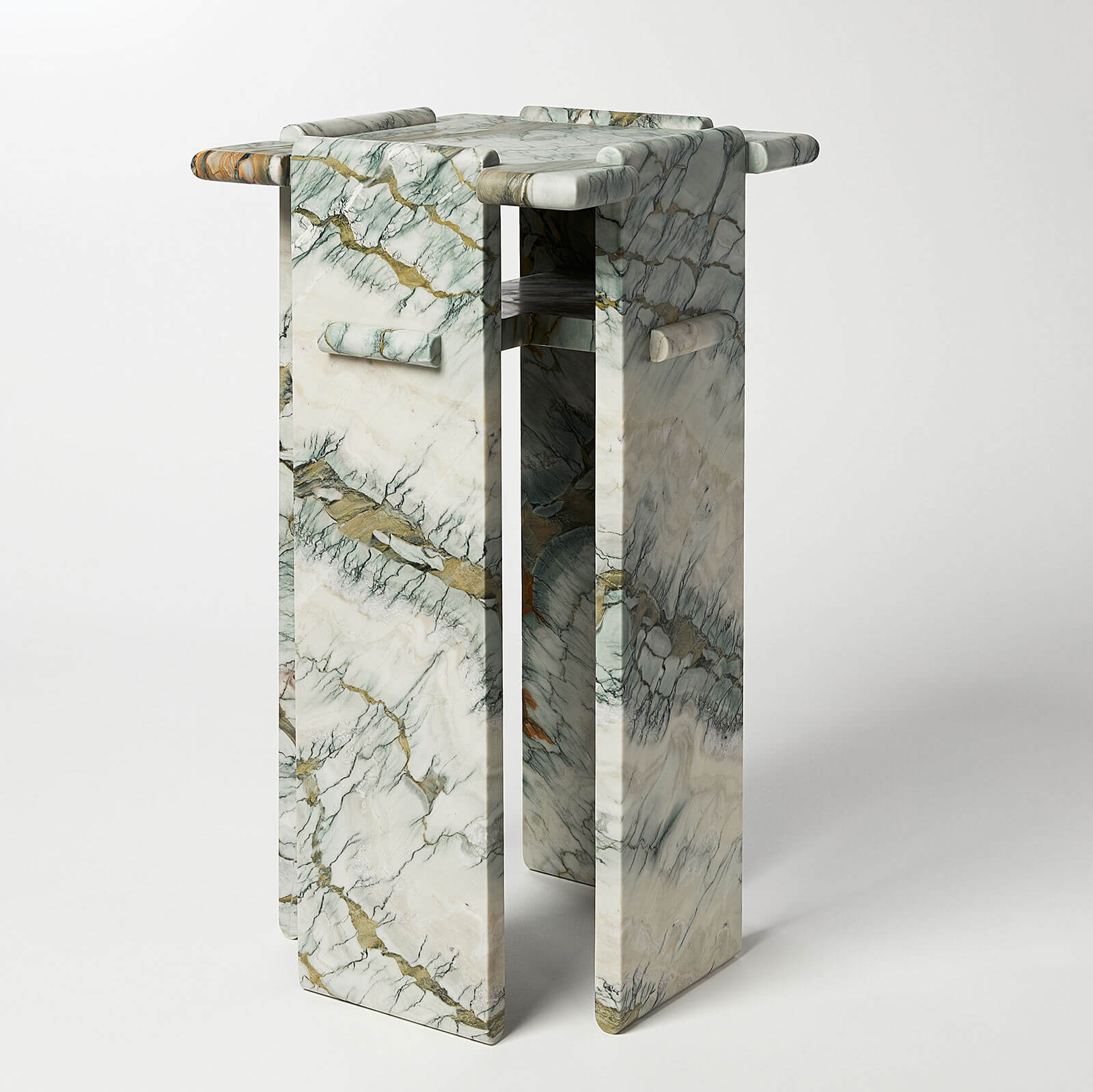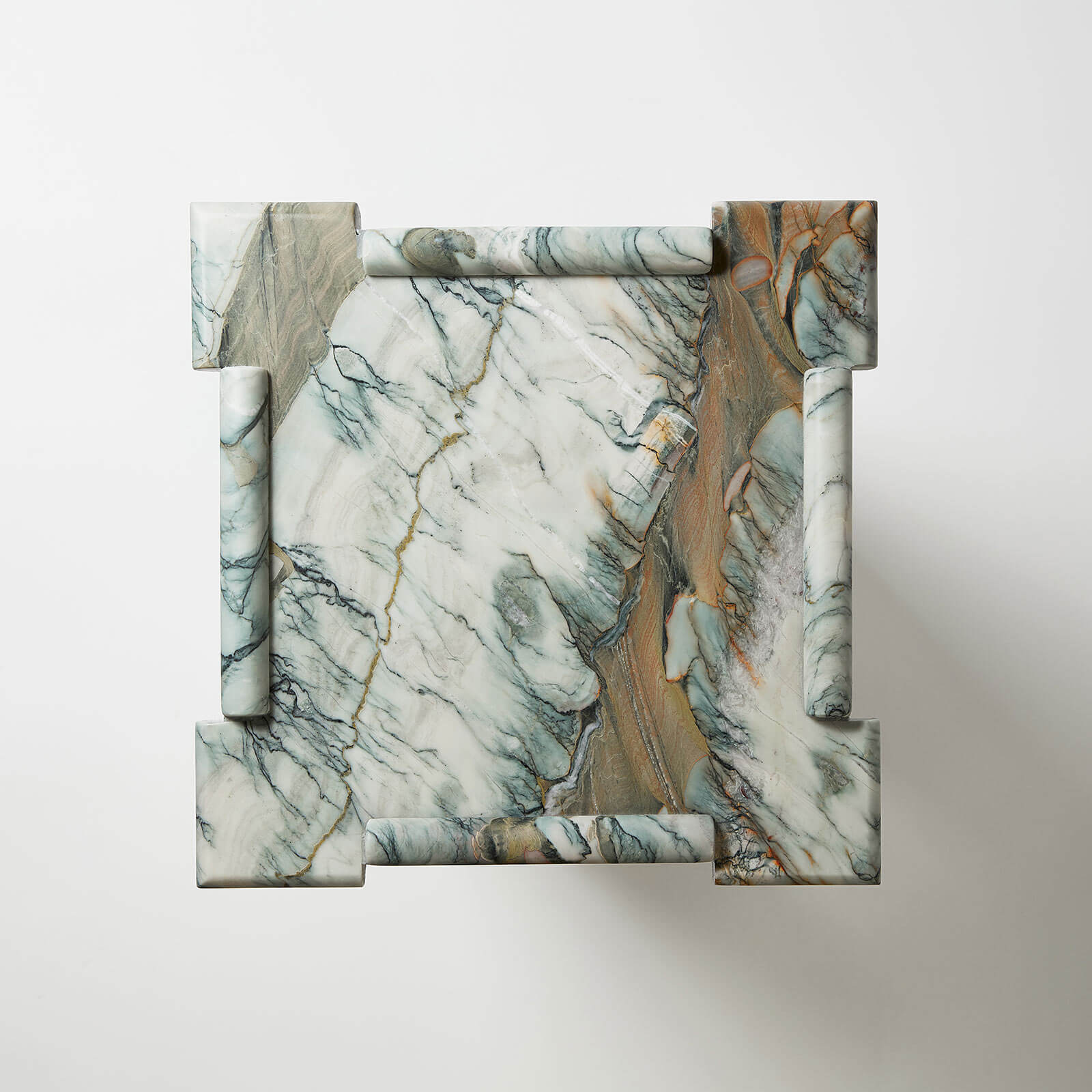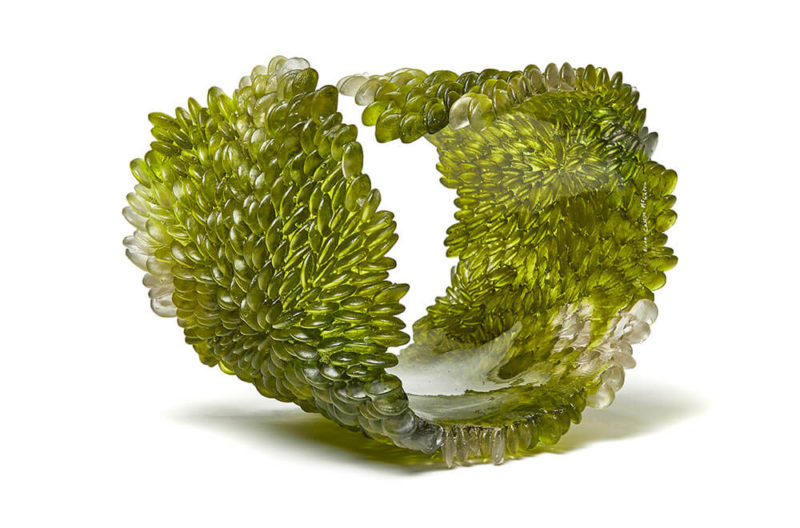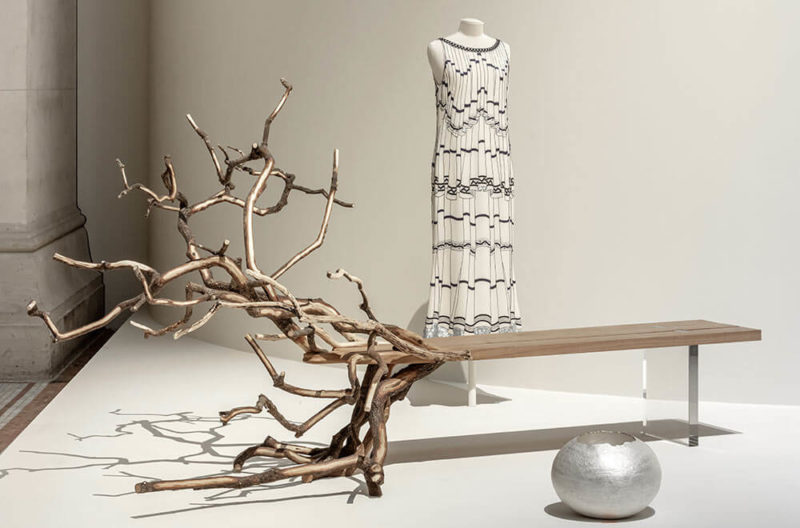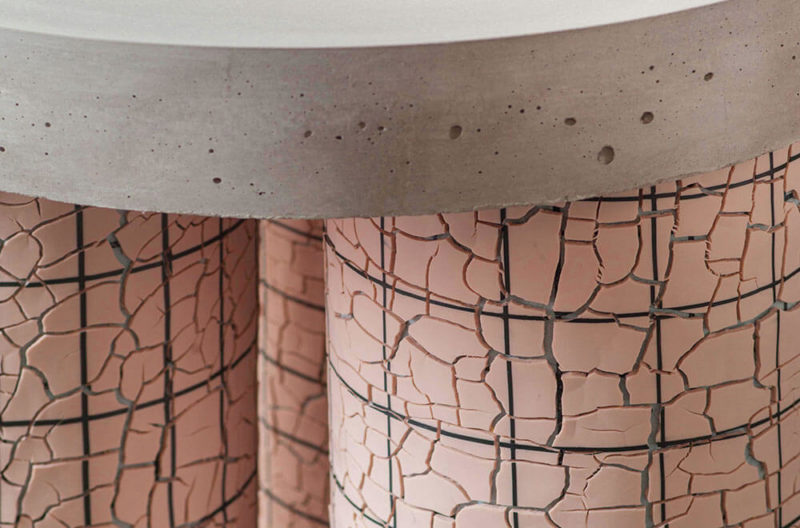‘Side Table 22’, 2021
Matthew Fisher
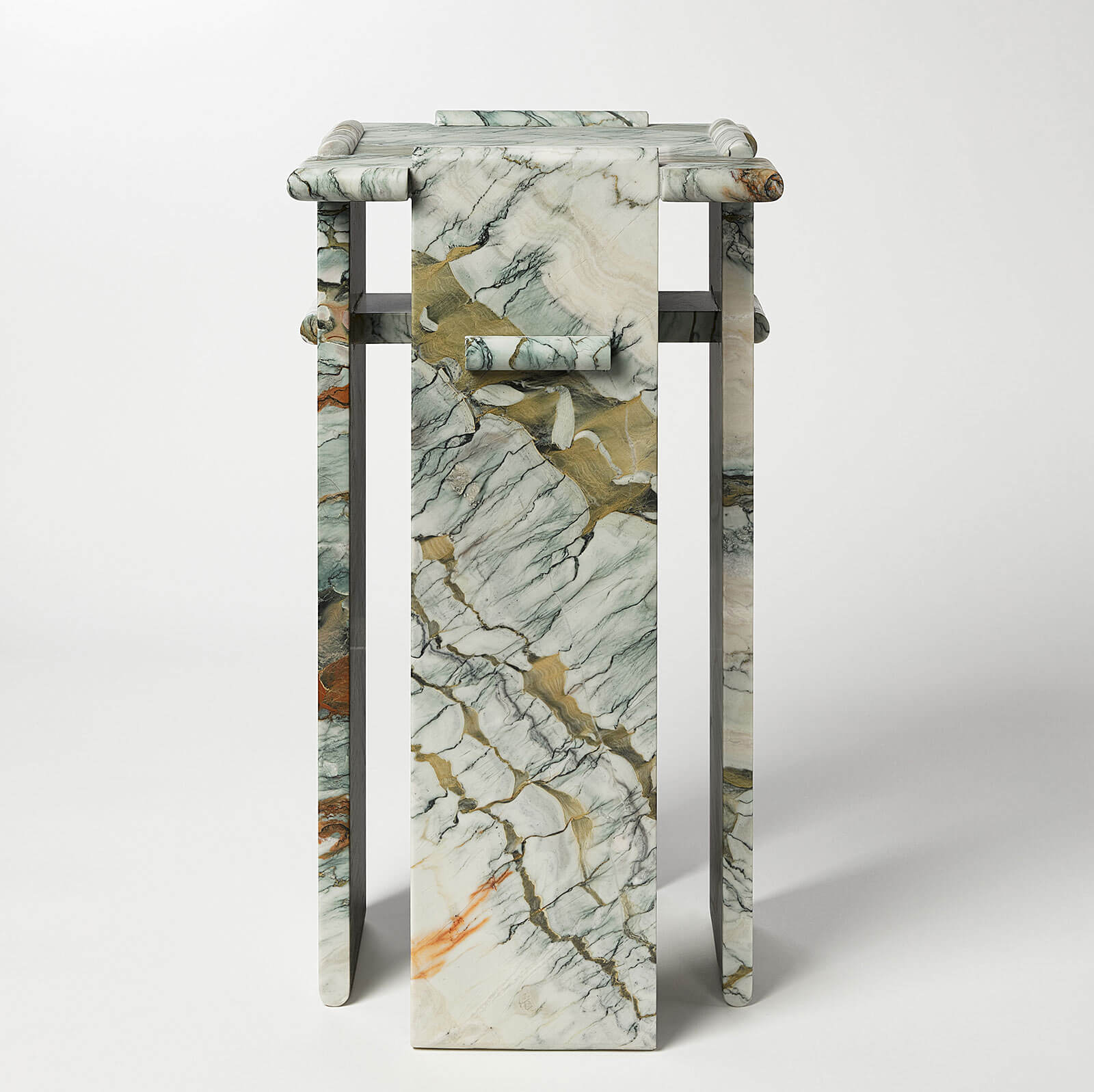
Matthew Fisher, ‘Side Table 22’ (Desert Green), 2021
COURTESY: Matthew Fisher
CONCEIVED THROUGH REPEATED geometric experimentations, the ‘Side Table 22’ takes shape as an intersecting matrix of fractured stone slabs. The object, comprised of interlocking surfaces, with richly veined, patinated and hand-finished textures, evokes the architectonic qualities of an ancient monument while remaining pure in composition. The design is produced in various materials but is perhaps most striking in the incredibly pictographic ‘Green Desert’ stone, rosso levanto and platinum travertine variants.
For New York-based designer Matthew Fisher, this particular furnishing, newly released through Galerie Philia, reflects a process unlike any of his other works. The design resulted from the discovery that certain types of chip-prone stones are better used in their solid sheet format than for carving delicate shapes. Fisher has demonstrated his mastery of the latter in collections like the concave Naid trays and urn-like Drag bowls. Working with the former marks a new departure in his practice, one in which he’s able to work on a slightly larger scale: “I achieved the final form of ‘Side Table 22’ by manipulating the planes of the tube through a limited number of modifications to the starting geometry, requiring myself to perform any operation I made at one side of the cube to the other four sides as well,” the Pratt Institute-trained designer explains. “I began opening voids between what became the legs of the table and carving notches for planes to slip past one another. The moves I made were toward achieving a visual weightlessness, while maintaining a monolithic presence to the overall form. These are cornerstones of my practice but I usually arrive at them through a very different approach.”
The newcomer has made a name for himself by championing a discipline that centres on the almost nostalgic reinterpretation of historic or timeless forms. Equally important is his implicit understanding of age-old crafts, and their focus on the transformation of natural materials such as marble, granite, alabaster and onyx. There’s also the surprising element of embodied movement that drives his practice.
“I attribute the formality of this work to my architectural studies, but more so to my background in classical dance,” Fisher reveals. “I first dealt with symmetry and balance as a dancer. Every day when starting class at the ballet bar I began performing pliés in five positions. Only after this exercise with absolute symmetry in the body would I begin to move off centre. This is actually one of the qualities I see in my work now as I become more and more comfortable with the medium of stone. I’ve begun to push my work beyond such rigidity while still maintaining a balance and resolve.” Such is often the case with craftspeople who can experiment, deviate – and even innovate – once they’ve mastered a proven and culturally-ingrained technique.
‘Side Table 22’ is a favourite amongst his collectors as it encapsulates many of these attributes. Regardless of this success, Fisher is keen to continue working with a resourceful approach that focuses on working with discarded materials, producing in limited runs and collaborating with local artisans.
-
Matthew Fisher, ‘Side Table 22’ (Desert Green), 2021
COURTESY: Matthew Fisher
-
Matthew Fisher, ‘Side Table 22’ (Desert Green), 2021 (from above)
COURTESY: Matthew Fisher
-
Matthew Fisher with ‘Side Table 22’ (Desert Green), 2021
COURTESY: Matthew Fisher

